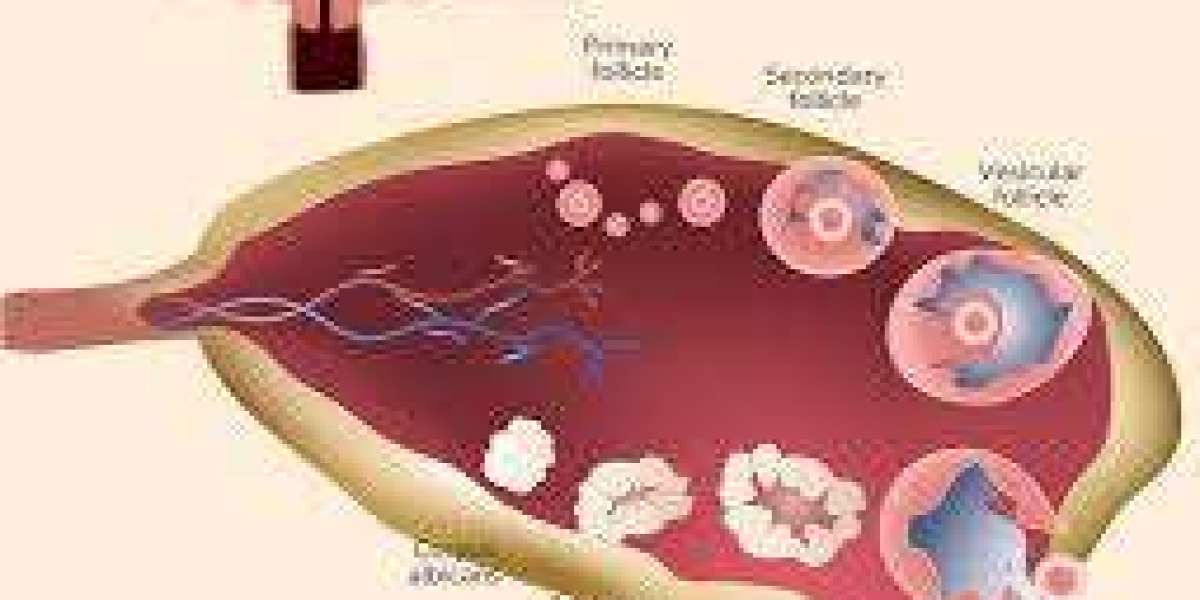Human Chorionic Gonadotropin (HCG) plays a pivotal role in fertility therapy, offering hope to countless individuals and couples striving to conceive. As a hormone naturally produced during pregnancy, HCG has become a cornerstone in assisted reproductive technologies (ART). This article delves into the science behind HCG, its applications in fertility treatments, and how it maximizes the chances of conception. We will also explore popular HCG brands such as Ovidrel, Novarel, and Pregnyl, as well as generic options like HUCOG 5000 HP and FERTIGYN HP 5000.
Understanding HCG: The Science Behind the Hormone
HCG is a glycoprotein hormone produced by the placenta after implantation. Its primary role is to support the production of progesterone by the corpus luteum during early pregnancy. Progesterone is essential for maintaining the uterine lining, ensuring a suitable environment for embryo implantation and development.
In fertility therapy, synthetic HCG mimics the action of the natural hormone. It is used to trigger ovulation in women undergoing treatments such as in vitro fertilization (IVF) or intrauterine insemination (IUI). By stimulating the final maturation and release of eggs from the ovaries, HCG significantly enhances the likelihood of successful conception.
The Role of HCG in Fertility Treatments
1. Ovulation Induction
HCG is commonly used to induce ovulation in women who have difficulty releasing eggs naturally. In cases of anovulation (lack of ovulation) or irregular ovulation, fertility specialists prescribe HCG to stimulate the ovaries. The hormone works by mimicking the luteinizing hormone (LH), which triggers the release of mature eggs from the ovarian follicles.
2. Supporting Luteal Phase
The luteal phase is the period between ovulation and the start of menstruation. During this phase, the corpus luteum produces progesterone to prepare the uterus for implantation. HCG supports the corpus luteum, ensuring adequate progesterone levels and improving the chances of a successful pregnancy.
3. Enhancing IVF Success Rates
In IVF treatments, HCG is administered to trigger final egg maturation before retrieval. This step is critical because it ensures that the eggs are at the optimal stage for fertilization. After egg retrieval, HCG may also be used to support the luteal phase, further increasing the chances of embryo implantation.
4. Male Fertility
While HCG is primarily associated with female fertility, it also plays a role in male fertility treatments. In men with hypogonadism (low testosterone levels), HCG can stimulate the testes to produce testosterone and improve sperm production. This dual action makes HCG a valuable tool in addressing male infertility.
Popular HCG Brands and Their Applications
Several pharmaceutical companies produce HCG under different brand names. Each brand has its unique formulation and administration method, but they all share the same active ingredient: HCG. Below are some of the most widely used HCG brands in fertility therapy:
1. Ovidrel
Ovidrel is a recombinant form of HCG, meaning it is produced using genetic engineering techniques. It is administered as a subcutaneous injection and is commonly used to trigger ovulation in women undergoing fertility treatments. Ovidrel is known for its high purity and consistent effectiveness.
2. Novarel
Novarel is a urinary-derived HCG product, extracted from the urine of pregnant women. It is administered via intramuscular injection and is often used in both ovulation induction and luteal phase support. Novarel is a cost-effective option for many patients.
3. Pregnyl
Pregnyl is another urinary-derived HCG product, similar to Novarel. It is widely used in fertility clinics for ovulation induction and luteal phase support. Pregnyl is available in various dosages, allowing for tailored treatment plans.
4. HUCOG 5000 HP and FERTIGYN HP 5000
These are generic versions of HCG, offering a more affordable alternative to brand-name products. HUCOG 5000 HP and FERTIGYN HP 5000 are both highly effective and widely used in fertility treatments. They are administered via intramuscular injection and are particularly popular in international markets.
Maximizing Your Chances of Conceiving with HCG
To achieve the best possible outcomes with HCG therapy, it is essential to follow a structured approach. Here are some key strategies to maximize your chances of conceiving:
1. Personalized Treatment Plans
Every individual’s fertility journey is unique. Work closely with your fertility specialist to develop a personalized treatment plan that addresses your specific needs. This may include determining the optimal dosage and timing of HCG administration.
2. Monitoring and Timing
Accurate monitoring of ovarian response is crucial in HCG therapy. Regular ultrasounds and blood tests help track follicle development and hormone levels. Timing the HCG injection correctly ensures that ovulation occurs at the right moment, increasing the likelihood of successful conception.
3. Combining HCG with Other Fertility Treatments
HCG is often used in conjunction with other fertility medications, such as follicle-stimulating hormone (FSH) and clomiphene citrate. Combining these treatments can enhance ovarian stimulation and improve overall success rates.
4. Lifestyle Factors
While HCG plays a significant role in fertility therapy, lifestyle factors also impact conception. Maintaining a healthy diet, managing stress, and avoiding harmful habits like smoking and excessive alcohol consumption can further improve your chances of success.
5. Post-Treatment Care
After HCG administration, follow your doctor’s instructions carefully. This may include progesterone supplementation to support the luteal phase and early pregnancy. Regular follow-ups ensure that any potential issues are addressed promptly.
Potential Side Effects and Risks
Like any medical treatment, HCG therapy comes with potential side effects and risks. Common side effects include mild pain or swelling at the injection site, headaches, and mood swings. In rare cases, ovarian hyperstimulation syndrome (OHSS) may occur, characterized by swollen ovaries and fluid accumulation in the abdomen. It is essential to discuss these risks with your healthcare provider and report any unusual symptoms immediately.
The Future of HCG in Fertility Therapy
Advancements in reproductive medicine continue to refine the use of HCG in fertility treatments. Researchers are exploring new formulations and delivery methods to enhance efficacy and reduce side effects. Additionally, ongoing studies aim to better understand the role of HCG in embryo implantation and early pregnancy, paving the way for improved treatment protocols.
Conclusion
HCG has revolutionized fertility therapy, offering hope to those struggling to conceive. Whether used for ovulation induction, luteal phase support, or enhancing IVF success rates, HCG plays a critical role in maximizing the chances of pregnancy. With a range of brand-name and generic options like Ovidrel, Novarel, Pregnyl, HUCOG 5000 HP, and FERTIGYN HP 5000, patients have access to effective and affordable treatments.
By working closely with fertility specialists, adhering to personalized treatment plans, and adopting a healthy lifestyle, individuals and couples can optimize their chances of achieving their dream of parenthood. As research continues to advance, the future of HCG in fertility therapy looks brighter than ever, promising even greater success rates and improved outcomes for patients worldwide.








